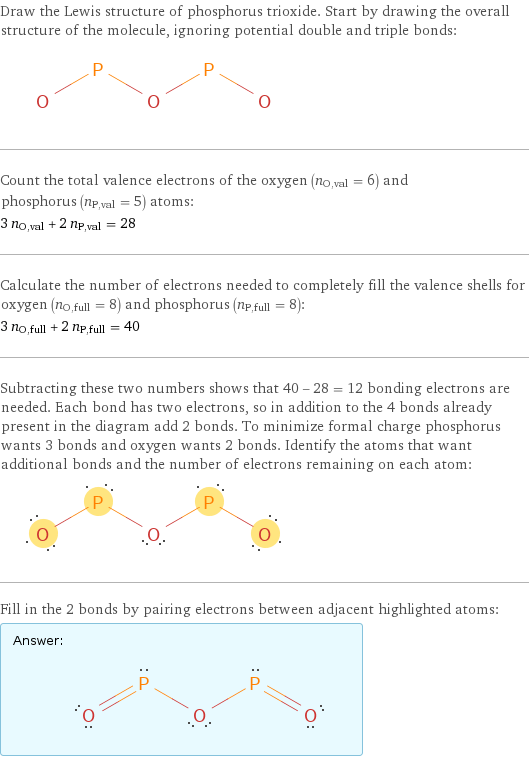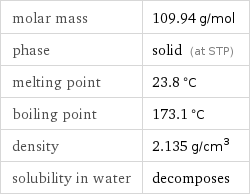Input interpretation

phosphorus trioxide
Chemical names and formulas

formula | P_2O_3 Hill formula | O_3P_2 name | phosphorus trioxide alternate names | diphosphorus trioxide | phosphorus sesquioxide mass fractions | O (oxygen) 43.7% | P (phosphorus) 56.3%
Lewis structure

Draw the Lewis structure of phosphorus trioxide. Start by drawing the overall structure of the molecule, ignoring potential double and triple bonds: Count the total valence electrons of the oxygen (n_O, val = 6) and phosphorus (n_P, val = 5) atoms: 3 n_O, val + 2 n_P, val = 28 Calculate the number of electrons needed to completely fill the valence shells for oxygen (n_O, full = 8) and phosphorus (n_P, full = 8): 3 n_O, full + 2 n_P, full = 40 Subtracting these two numbers shows that 40 - 28 = 12 bonding electrons are needed. Each bond has two electrons, so in addition to the 4 bonds already present in the diagram add 2 bonds. To minimize formal charge phosphorus wants 3 bonds and oxygen wants 2 bonds. Identify the atoms that want additional bonds and the number of electrons remaining on each atom: Fill in the 2 bonds by pairing electrons between adjacent highlighted atoms: Answer: | |
3D structure

3D structure
Basic properties

molar mass | 109.94 g/mol phase | solid (at STP) melting point | 23.8 °C boiling point | 173.1 °C density | 2.135 g/cm^3 solubility in water | decomposes
Units

Solid properties (at STP)

density | 2.135 g/cm^3
Units

Chemical identifiers

CAS number | 1314-24-5 PubChem CID number | 14810 SMILES identifier | O=POP=O InChI identifier | InChI=1/O3P2/c1-4-3-5-2 Gmelin number | 169809